Vauxhall Combo (2018 – 2024) Review
Vauxhall Combo (2018 – 2024) At A Glance
The Combo marks a strong return to form for Vauxhall vans. Not only does it cover all of the important small van requirements, when it comes to carrying capacity, running costs and practicality, but it also breaks new ground when it comes to safety tech. It’s just a pity that the majority of the smart features cost extra.
The Vauxhall Combo is based on the same platform as the Citroen Berlingo, which means the largest versions will carry up to 1050kg and provide as much as 4.4 cubic metres of load space. It’ll also carry pipes and ladders, measuring up to 3.4 metres, when fitted with the optional FlexCargo load-through hatch.
Vauxhall edges ahead of its rivals, like the Ford Transit Connect and Volkswagen Caddy, when it comes to running costs. Advertised fuel economy peaks at 67.3mpg, which makes the Combo one of the most efficient vans in its class.
The Combo is available in Standard (4.4 metres) or XL body lengths (4.75 metres) – both get the choice of two or three front seats in the front. All will carry two Euro pallets, while the 1.2 metre load width between the rear wheel arches provides enough space for a forklift to load the van without causing damage to the load bay.
The Combo gets a huge array of useful, innovative tech. The overload warning system is the most important (albeit optional) addition, providing a timely reminder when the van nears its load limit. The van can also be fitted with a camera system, which emulates the rear-view mirror by displaying what's behind the van on the infotainment touchscreen.
At launch, the Combo gets the choice of 1.6 and 1.5 turbodiesels. The 1.6 Turbo D can be specified with 75PS or 100PS, with the latter providing the best balance between performance and fuel economy. A 130PS 1.5 Turbo D adds more power and torque for shifting heavy loads - it's also the only engine to get the optional eight-speed automatic gearbox. A 1.2 Puretech petrol is added to the range in mid-2019.
Regardless of which engine you choose, the Combo remains an easy and largely stress-free van to drive. The cabin is airy, comfortable and modern, while the light steering and firm suspension provides a supple ride quality that is only ever spoilt by the fitment of optional 16-inch alloy wheels.
Driving the Vauxhall Combo (2018 – 2024)
The Vauxhall Combo is a small van that's designed to cover huge distances at the lowest possible fuel cost. Most small businesses and sole traders will opt for the 1.5 or 1.6 turbocharged diesels, while short multi drop city-based drivers will prefer the 1.2 petrol.
All of the engines are sourced from Vauxhall's parent company PSA - Peugeot/Citroen - with the entry-level 1.6 Turbo D based on the 1.6-litre unit that powered the old Berlingo. However, while it might be getting on in years, the four-cylinder turbodiesel makes a strong case for itself with low running costs and lots of low-gear pull for shifting heavy loads.
The 1.6 Turbo D range starts with the entry-level 75PS unit, which produces 210Nm of torque from 1750rpm and returns an official 64.2mpg. This engine is only available on the Standard Combo bodystyle with a five-speed manual gearbox. The 0-62mph dash takes around 16 seconds, which leaves the 75PS diesel feeling quite slow.
The 100PS version of the 1.6 Turbo D is far superior; not only does it produce more power and torque (259Nm) but it is also cheaper to run with Vauxhall advertising 67.3mpg. Available in both Standard and XL bodystyles, the 100PS 1.6 Turbo D takes around 12 seconds to reach 62mph.
At launch, the 1.5 Turbo D is restricted to the Combo Standard bodystyle only, but provides much more power and 300Nm of torque. The 1.5 has an advertised range of 64-66mpg, which means you don't pay a hefty price for its higher output. It's also the quickest off the mark, with 0-62mph taking 10 seconds, and the only engine to get the optional eight-speed automatic gearbox.
From 2019, Vauxhall adds the three-cylinder 1.2 Puretech turbocharged petrol to the Combo range with 110PS or 130PS. Fuel economy will be confirmed in 2019, but torque will be roughly in line with the 75PS 1.6 diesel.
Drivers who live in rural areas can specify IntelliGrip electronic traction control, which optimises the front-wheel drive system to cope with ice, snow, mud and sand. The optional Construction Pack provides improved underbody protection, thanks to a sump guard and Michelin Latitude Tour Mud and Snow tyres for added grip. The chassis height is also increased by 30mm.
Vauxhall Combo (2018 – 2024) interior
Vauxhall offers the Combo as a panel van or five-seater crew van, in two load lengths – Standard and XL. Depending on which model you choose, payloads range from 650kg – 1050kg, while load volumes start at 3.3 cubic metres for the Standard bodystyle and rise to 4.4 cubic metres for the longer XL van.
While a single side sliding door is fitted as standard, we’d recommend spending extra on the second door and the optional Flex Cargo pack - the latter expands the Combo's flexibility by adding a load hatch in the bulkhead.
The Standard Combo has a load length of 1.8 metres (3.0 metres with the FlexCargo) while the XL model provides 2.1 or 3.4 metres with the optional hatch. The load width, however, is slightly down on the 1.7 metres you get in the old Combo with the newer version providing 1.6 metres.
Most Combos get a useful 1.2 metre load width between the rear wheel arches, with the only exception being the crew van which has 1.1. Owing to the fact that the Combo doesn't have a high roof option, the loading heights are limited to 548mm for the Standard van and 620mm for the XL model.
The Combo gets two or three seats up front, but the position of the gearbox on manual versions will make it a snug fit for three large adults. There are lots of useful storage points for cups, phones and valuables. All vans get an overhead shelf and underseat storage, while two USB ports and a 12V socket should keep mobile devices charged while the van is on the move.
Standard equipment is generally fine, with entry-level Combo vans getting DAB audio, Bluetooth phone connectivity and electric and heated door mirrors. That said, you have to upgrade to the mid-spec model to get things air conditioning, cruise control and lumbar adjustment for the driver's seat. Range topping versions get an eight-inch colour touchscreen with navigation and connectivity for Apple CarPlay and Android Auto.
Model History
- June 2018: Vauxhall unveils all-new Combo
- September 2018: Combo to start from £15,630 excluding VAT
- September 2018: Vauxhall Combo named International Van of the Year 2019
- August 2019: Surround Rear Vision camera added to Combo van
June 2018
Vauxhall unveils all-new Combo
Based on an all-new architecture and is available in a selection of variants, including short wheelbase, long wheelbase and crew van. It can carry a load volume of up to 4.4 cubic metres and a payload of up to a tonne. Longer items up to 3440mm, such as pipes and ladders, can be stored safely and securely, thanks to the rear swing doors and FlexCargo load through hatch.
In crew van body style, up to five occupants can be accommodated, while the load is safely stowed behind a partition wall. In addition, the rear bench can be folded down and the partition moved behind the front seats if required.
For added peace of mind, there is a sensor-based load indicator that warns if the van is overloaded. Once the engine is switched on, a white LED lights up if the weight exceeds 80 per cent of the permitted payload keeping the van safe. If the weight is above the limit, an orange signal with an exclamation mark lights up.
The new generation of infotainment systems ensures outstanding on-board connectivity. The Apple CarPlay and Android Auto compatible Multimedia Radio and Multimedia Navi Pro systems can easily be controlled via the eight-inch colour touchscreen. The integrated navigation system of the top-of-range-line unit with European maps and 3D navigation also shows Traffic Messaging Channel updates, ensuring that drivers can always select the best route and avoid traffic. Elsewhere, the heated front seats and steering wheel offer added comfort when the temperature drops.
September 2018
Combo to start from £15,630 excluding VAT
Edition from £15,630 excl. VAT: The Combo Edition features a 4-way adjustable driver seat and a passenger seat with practical under-seat storage. In addition to 15-inch wheels with a centre cover and a fixed steel bulkhead, a kerbside sliding door and overhead storage allow for easy loading. A 5-inch display radio with Bluetooth and DAB, one-touch windows and electric and heated exterior mirrors complete the package.
Sportive from £17,705 excl. VAT: In addition to the benefits of Edition, the Combo Sportive features a 6-way driver seat with lumbar support, armrest and storage, as well as a 4-way passenger seat. Larger 16-inch wheels with a full cover and air conditioning create a premium feel. Metallic paint and front and rear body-colour bumpers allows drivers to customise the appearance of their van. The Combo Sportive is fitted with Rear Parking Sensors, Cruise Control (with speed limiter) and an alarm to improve security.
LE NAV from £18,905 excl. VAT: Building on the features of Sportive, the Combo LE NAV is available with body colour exterior mirrors, exterior door handles, side protection mouldings and front bumper with skid plate. Also included are 16-inch alloy wheels and an 8-inch touchscreen with NAVI.
Crewvan from £18,605 excl. VAT: The Combo Crewvan is fitted with a fold-flat passenger seat, as well as an innovative two-position caged bulkhead that moves forward when the second row seats are folded down. A protective bag is included to prevent damage to the interior and dashboard that may be caused by longer loads.
September 2018
Vauxhall Combo named International Van of the Year 2019
The third generation best-seller was crowned by a panel of 25 journalists and independent magazine editors who specialise in Light Commercial Vehicles (LCVs). While improving its space and practicality, New Combo was also recognised for its style, increased comfort, technologies and features worthy of today’s passenger cars.
“The engineers and designers succeeded for the first time in the history of LCVs to create a multi-brand cooperation van, where all brands maintain their core values and brand personality without almost any compromise,” said a spokesperson for the International Van of the Year jury.
August 2019
Surround Rear Vision camera added to Combo van
The optional system provides all-round visibility and helping drivers to safely turn and manoeuvre the van.
Not only does the Surround Rear Vision camera system greatly improve visibility to the rear, but also in the area of the blind spot on the passenger side. The technology is particularly useful in preventing potential accidents with cyclists and pedestrians when turning left.
The security feature combines two cameras that provide a range of views to the rear and to the side. The first camera is mounted above the rear doors, overlooking the area behind the vehicle. When reversing and parking, its display is shown on a dedicated five-inch screen. The driver can also switch between a close and a wider rear view. The wider rear view can also be shown when driving forwards, displaying a distance of four to over 30 metres behind the Combo Cargo.
The second camera is located under the passenger-side mirror of the Combo Cargo and shows the passenger view towards the rear. By switching to the display via the touchscreen, the driver can see whether cyclists or pedestrians are in what would normally be the blind spot. This allows the driver to safely turn left or the side of the vehicle is clear, preventing a potential accident.
This feature is part of the Parking Pack, a smart solution for today’s overcrowded roads. The pack also consists of front and rear parking distance sensors, power-folding door mirrors, front fog lights and ultrasonic side sensors. The parking pack, including the Surround Rear Vision camera, is available from £666.67 +VAT.

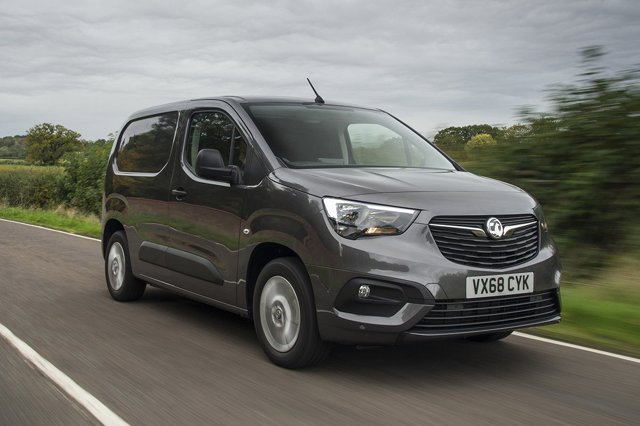

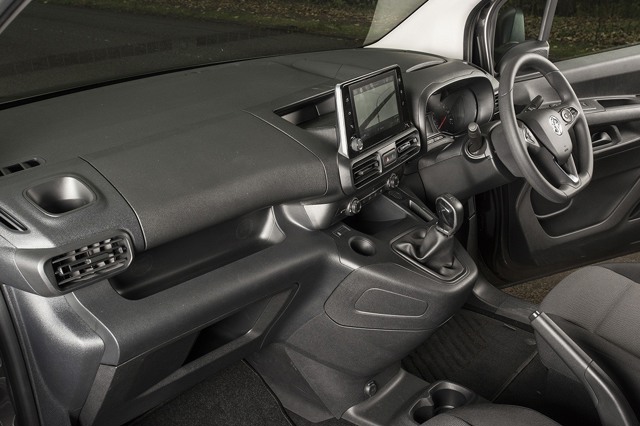
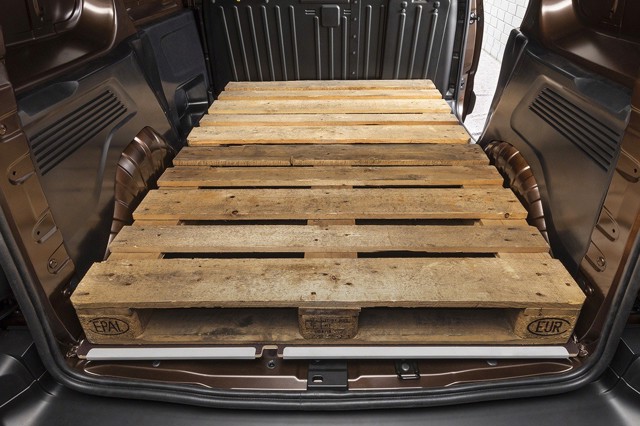
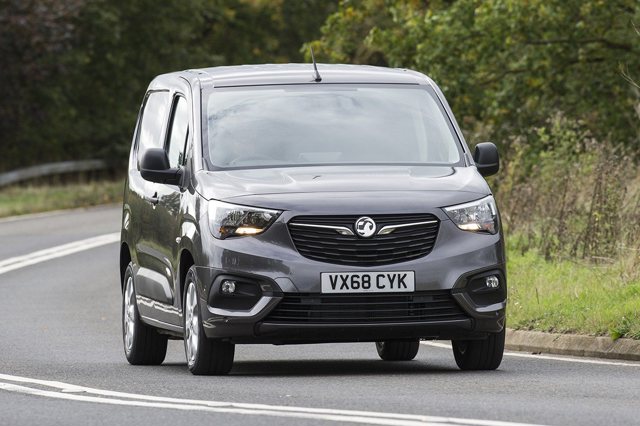
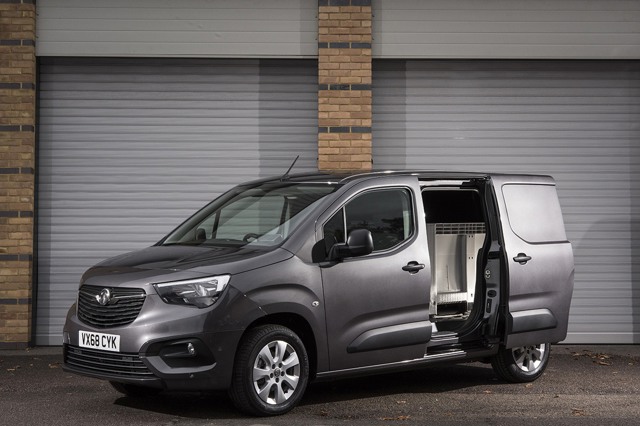

 Practical small van with one-tonne payload, will carry items up to 3440mm in length, can seat up to three in the front.
Practical small van with one-tonne payload, will carry items up to 3440mm in length, can seat up to three in the front.
 Most of the smart tech costs extra, no high roof option, petrol engines won't arrive until late 2019.
Most of the smart tech costs extra, no high roof option, petrol engines won't arrive until late 2019.